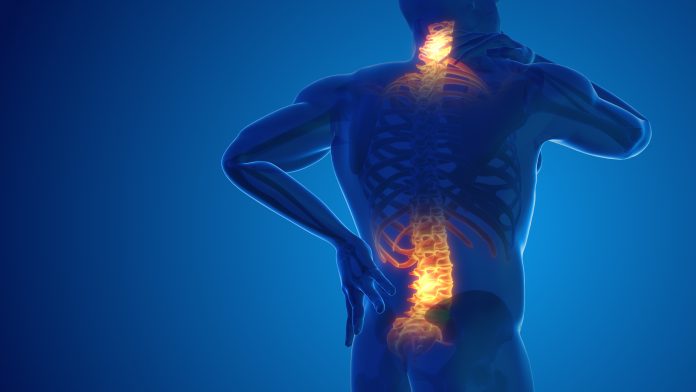Steph Sherer, Founder and President of Americans for Safe Access (ASA), discusses the prevalence, challenges and treatments for chronic pain management
Chronic pain is a pervasive issue affecting millions of individuals across the United States, with substantial implications for their quality of life and other societal costs. According to the CDC, chronic pain affects approximately 20.4% of US adults, with 8% experiencing high-impact chronic pain that significantly interferes with daily activities. Traditional pharmacotherapies often fall short of providing adequate relief, leading many individuals to explore alternatives. Amidst the ongoing opioid crisis, medical cannabis has emerged as a viable tool to combat chronic pain issues among healthcare professionals, patients, researchers, and policymakers alike.
Benefits of medical cannabis in chronic pain management
The allure of medical cannabis stems from its potential to safely offer relief from chronic pain while potentially mitigating the need for opioid medications. Compounds known as cannabinoids, such as THC (tetrahydrocannabinol) and CBD (cannabidiol), interact with the body’s endocannabinoid system. This system is involved in modulating various physiological processes, including pain perception. The endocannabinoid system modulates immune system activity, and its dysregulation is involved in various chronic inflammations.
Research suggests that cannabis can alleviate chronic pain through multiple mechanisms. THC, the psychoactive component of cannabis, acts on receptors in the brain and nervous system, reducing pain signalling. CBD, on the other hand, may enhance the body’s natural pain-relieving mechanisms by inhibiting the breakdown of endocannabinoids. Furthermore, when patients use medical cannabis with opioids, they experience pain relief from opioids at lower doses. Studies have indicated that cannabis use among individuals with chronic pain is associated with lower opioid dose requirements, potentially reducing the risk of opioid-related adverse effects and dependency. This opioid-sparing effect also allows patients to reduce their reliance on opioid medications.
Education and advocacy: Americans for Safe Access
In the realm of medical cannabis advocacy and education, Americans for Safe Access (ASA) plays a crucial role in providing resources and support for patients, caregivers, medical professionals, and advocates. Founded in 2002, ASA is a nonprofit organization dedicated to ensuring safe and legal access to medical cannabis for therapeutic use and research.
ASA offers a wealth of educational resources, including informational guides, webinars, and workshops aimed at empowering patients with knowledge about medical cannabis use, dosing, administration methods, and legal rights. Caregivers and advocates can also benefit from ASA’s educational materials, gaining insights into navigating legal frameworks, advocating for policy reform, and supporting patients in accessing medical cannabis treatment. These educational resources can be found at www.SafeAccessNow.org.
ASA supports advocates working at the local, state, and federal levels and is currently leading a national effort to change federal medical cannabis policies to advance patient access and rights. Through grassroots campaigns, lobbying, education, and legal initiatives, ASA works to shape regulatory environments to expand to include the use medical of cannabis as a treatment option for all Americans.
Areas for further research
While the benefits of medical cannabis in chronic pain management are promising, additional research should focus on optimal therapeutic strategies. Key areas for further investigation include:
- Dosing and administration: Research into optimal dosing regimens, administration methods, and cannabinoid ratios for different types of pain conditions can help optimize treatment outcomes.
- Mechanisms of action: Cannabis has been used for thousands of years to alleviate inflammation and pain. However, further exploration of the underlying mechanisms by which cannabinoids modulate pain perception and inflammation can enhance our understanding of their therapeutic effects and inform product development.
- Patient-centered outcomes: Studies focusing on patient-reported outcomes, including pain severity, quality of life, mood, and sleep disturbances, can provide valuable insights into the subjective experiences of individuals using medical cannabis for chronic pain.
Addressing the opioid crisis: Role of medical cannabis
The opioid crisis represents a multifaceted public health challenge characterized by escalating rates of opioid misuse, addiction, and overdose deaths. In this context, wider acceptance and integration of medical cannabis as a front-line therapeutic option for chronic pain management presents an opportunity to impact the opioid crisis by offering patients an alternative treatment modality with a lower risk of adverse effects and dependency.
Evidence suggests that medical cannabis use is associated with reduced opioid consumption among individuals with chronic pain, offering a promising harm-reduction strategy. By providing patients with access to effective pain relief while minimizing their reliance on opioids, medical cannabis has the potential to play a supportive role in curbing the opioid epidemic.
References
- Dahlhamer J, Lucas J, Zelaya C, et al. Prevalence of chronic pain and high-impact chronic pain among adults–United States, 2016. MMWR Morb Mortal Wkly Rep. 2018;67:1001-1006.
- Boehnke KF, Scott JR, Litinas E, et al. Pills to pot: observational analyses of cannabis substitution among medical cannabis users with chronic pain. J Pain. 2019;20(7):830-841.
- Campbell G, Hall WD, Peacock A, et al. Effect of cannabis use in people with chronic non-cancer pain prescribed opioids: findings from a 4-year prospective cohort study. Lancet Public Health. 2018;3(7):e341-e350.
- Medical marijuana. NIH National Center for Complementary and Integrative Health. https://nccih.nih.gov/health/marijuana. Accessed January 13, 2020.
- Carr D, Schatman M. Cannabis for chronic pain: not ready for prime time. Am J Public Health. 2019;109(1):50-51.
- Cassels C. Medical cannabis safe, effective in the elderly. Medscape. www.medscape.com/viewarticle/912624. May 6, 2019. Accessed January 13, 2020.
- Hill KP, Palastro MD, Johnson B, Ditre JW. Cannabis and Pain: A Clinical Review. Cannabis Cannabinoid Res. 2017;2(1):96–104. Published 2017 May 1. doi:10.1089/can.2017.0017
- Galluzzi KE. Management of Neuropathic Pain. J Am Osteopath Assoc2005;105(suppl_4):S12–S19.
- Rahn EJ, Hohmann AG. Cannabinoids as pharmacotherapies for neuropathic pain: from the bench to the bedside. Neurotherapeutics. 2009;6(4):713–737. doi:10.1016/j.nurt.2009.08.002
- Vučković S, Srebro D, Vujović KS, Vučetić Č, Prostran M. Cannabinoids and Pain: New Insights From Old Molecules. Front Pharmacol. 2018;9:1259. Published 2018 Nov 13. doi:10.3389/fphar.2018.01259
- Minnesota Department of Health. (2022). “Dosing and Chemical Composition Report: A Review of Medical Cannabis Studies Relating to Chemical Compositions and Dosages for Qualifying Medical Conditions.” Accessed 13 March 2024.
- Strand N, D’Souza RS, Karri J, Kalia H, Weisbein J, Kassa BJ, Hussain N, Chitneni A, Budwany RR, Hagedorn J, Pope JE, Deer TR, Sayed D, Abd-Elsayed A. Medical Cannabis: A Review from the American Society of Pain and Neuroscience. J Pain Res. 2023 Dec 8;16:4217-4228. doi: 10.2147/JPR. S425862. PMID: 38094100; PMCID: PMC10716240.











